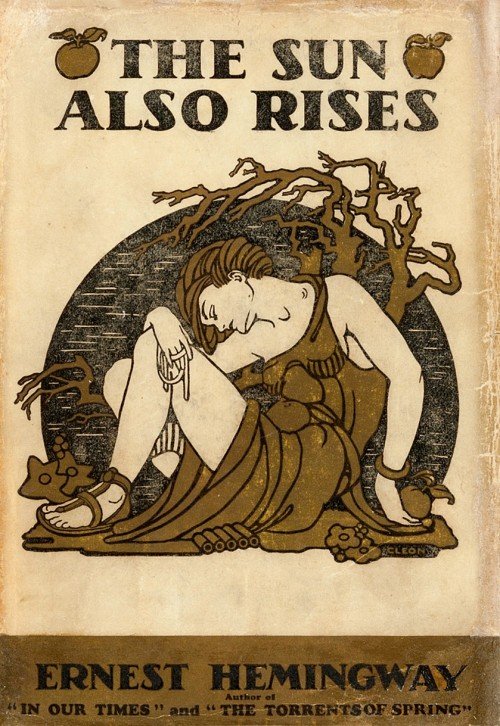The Sun Also Rises: Exploring the Struggles of the Lost Generation

"The Sun Also Rises" by Ernest Hemingway is a classic novel that explores the lives of a group of expatriates living in Paris during the 1920s. The book is widely considered to be one of Hemingway's best works, and it is often cited as one of the greatest novels of the 20th century.
The story follows the main character, Jake Barnes, a journalist who was wounded during World War I and left impotent. He is in love with a young woman named Brett Ashley, but their relationship is complicated by Jake's injury. Brett is a free spirit who is involved with many men, including Jake's friend Robert Cohn and the bullfighter Pedro Romero. The group travels to Pamplona, Spain to watch the bullfights, which serve as a backdrop for the characters' various emotional struggles and romantic entanglements.
One of the most striking aspects of "The Sun Also Rises" is Hemingway's spare, direct prose style. He uses simple, straightforward language to convey complex emotions and ideas, creating a sense of understated intensity that is both powerful and haunting. The novel also features Hemingway's trademark themes of masculinity, honor, and the struggle to find meaning in a world that seems chaotic and uncertain.
One of the most striking aspects of "The Sun Also Rises" is Hemingway's spare, direct prose style. He avoids flowery language and long descriptions, preferring to use simple, concrete language that conveys complex emotions and ideas in a concise manner. This style gives the novel a sense of immediacy and intensity, and it allows the reader to immerse themselves in the characters' thoughts and emotions.
Another striking aspect of the book is its portrayal of the Lost Generation, a term coined by Hemingway to describe the disillusioned and disenchanted young people who came of age during World War I. The characters in the novel are all members of this generation, and the book explores their sense of alienation and aimlessness in a world that has been shattered by war and social upheaval.
The novel also features Hemingway's trademark themes of masculinity, honor, and the struggle to find meaning in a chaotic and uncertain world. The male characters in the book are all struggling to define their masculinity in the wake of the war, and they often engage in physical contests or feats to prove their strength and bravery. The idea of honor is also important, as the characters are constantly trying to prove themselves and maintain their dignity in the face of difficult circumstances.
Finally, the book's setting is also striking. The scenes set in Pamplona, Spain, during the bullfighting festival, provide a vivid and memorable backdrop for the characters' emotional struggles and romantic entanglements. The intense atmosphere of the bullring, with its danger and excitement, mirrors the characters' own experiences of love and loss, and adds to the novel's sense of urgency and intensity.
Another notable feature of the book is its depiction of the Lost Generation, a term coined by Hemingway to describe the disillusioned and disenchanted young people who came of age during World War I. The characters in "The Sun Also Rises" are all members of this generation, and the book explores their sense of alienation and aimlessness in a world that has been shattered by war and social upheaval.The main idea of "The Sun Also Rises" by Ernest Hemingway is the struggle of the Lost Generation, a group of disillusioned and disenchanted young people who came of age during World War I, to find meaning and purpose in a world that has been shattered by war and social upheaval. The novel explores themes of masculinity, honor, love, and friendship through the experiences of the main character, Jake Barnes, and his friends as they navigate their way through life in Paris and Spain. Hemingway's spare, direct prose style and the novel's vivid setting in Pamplona, Spain, during the bullfighting festival, add to the book's sense of intensity and urgency. Overall, "The Sun Also Rises" is a powerful portrait of a generation struggling to find its place in the world, and it remains a timeless masterpiece of modern literature.
Despite its bleak themes and often unlikable characters, "The Sun Also Rises" is a deeply compelling and memorable book. Hemingway's prose is both spare and evocative, and his characters are complex and flawed, yet ultimately sympathetic. The book offers a powerful portrait of a generation struggling to find its place in the world, and it remains a timeless masterpiece of modern literature.